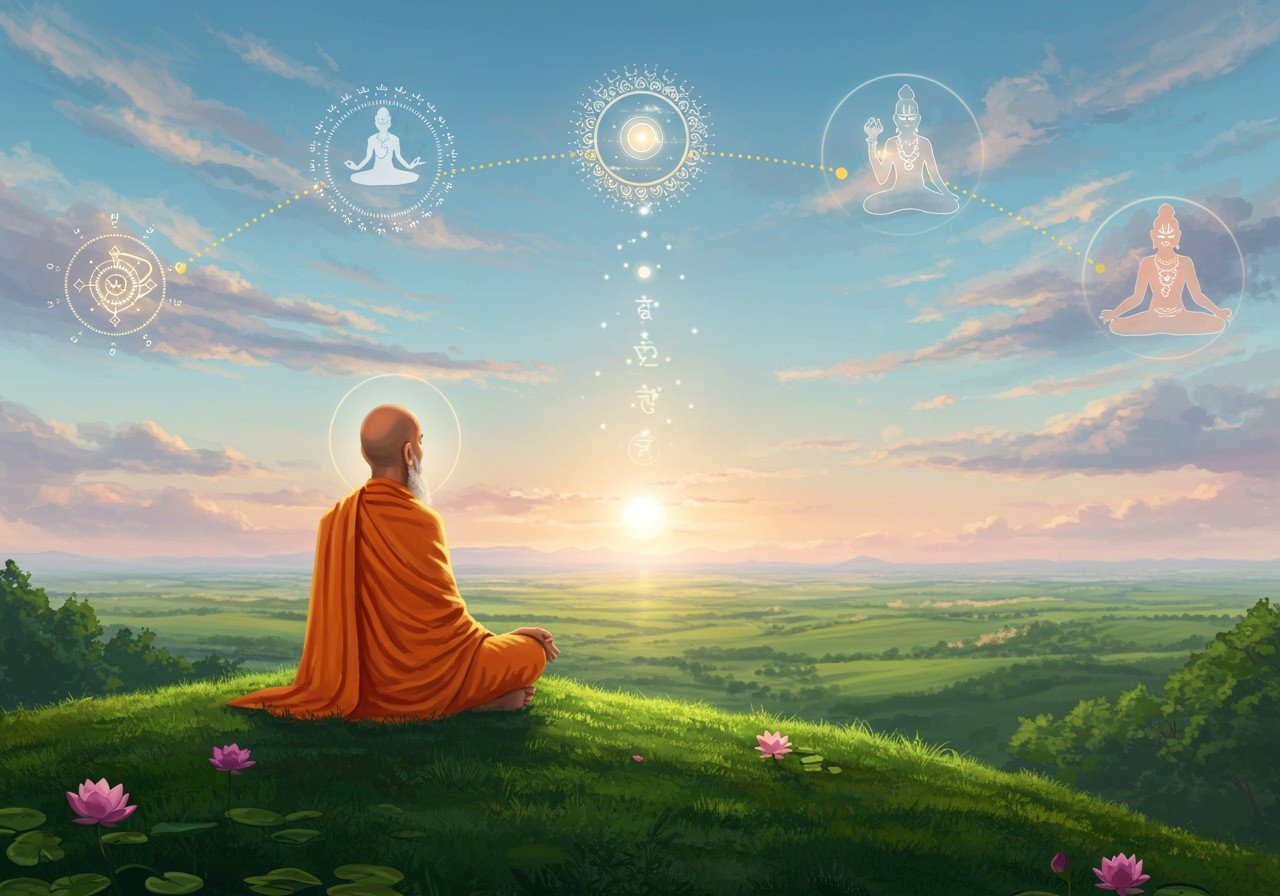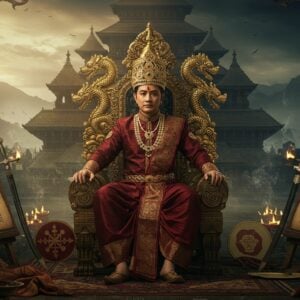
Namaste. India’s spiritual heritage is a vast ocean of wisdom, and within it, Hindu philosophies shine like bright pearls. These philosophies, passed down through generations, offer profound insights into the nature of reality, the self, and the universe. They are not just ancient texts; they are living traditions that continue to guide us on our spiritual journeys. Join us as we explore three of these gems: Vedanta, Yoga, and Samkhya.
Vedanta: Unveiling the Oneness of Existence
Vedanta, meaning “the end of the Vedas,” delves into the core of the Upanishads, exploring the ultimate reality known as Brahman and its relationship with our individual selves, the Atman. Imagine a single drop of water merging back into the vast ocean – that’s the essence of Vedanta’s non-dualistic (Advaita) perspective. It emphasizes the oneness of existence, the divinity within each of us, and the interconnectedness of all things. Learn more about Hindu philosophy in our beginner’s guide.
- Understanding Brahman: Brahman is the unchanging, infinite, and eternal reality that underlies everything. It’s the source from which the entire universe arises and to which it eventually returns.
- The Nature of Atman: Your true self, the Atman, is not separate from Brahman. It’s a spark of the divine residing within you, pure consciousness, waiting to be realized. It is the real “you” beyond the limitations of the body and mind.
Today, Vedanta’s teachings offer solace and direction in our busy lives. They remind us of our inherent connection to the divine and inspire us to seek inner peace amidst the chaos of the world. Vedanta teaches that liberation (moksha) is achievable in this lifetime through self-knowledge and the realization of one’s own divinity.
Yoga: The Eightfold Path to Self-Discovery
Yoga, often associated with physical postures (asanas), is much more than a workout. It’s a holistic system for achieving physical, mental, and spiritual well-being. Patanjali’s Yoga Sutras outline the eight limbs of Yoga, offering a step-by-step guide to a more meaningful and purposeful life.

- Ethical Foundations (Yamas & Niyamas): These moral and personal disciplines form the bedrock of a yogic life. They guide us towards ethical behavior and self-discipline, creating a solid foundation for inner growth.
- Physical Postures (Asanas) & Breath Control (Pranayama): Asanas purify the body, while pranayama cultivates vital energy (prana), preparing the mind for deeper states of awareness. These are essential for physical and mental well-being.
- Withdrawal of Senses (Pratyahara), Concentration (Dharana), and Meditation (Dhyana): These practices train the mind to become focused and still, moving inwards from the external world to achieve inner peace.
- Absorption (Samadhi): The ultimate goal of Yoga, samadhi, is a state of profound absorption in the divine, a blissful union with the ultimate reality. It brings true and lasting inner peace.
At poojn.in, you’ll discover a range of products to support your Yoga journey, including comfortable yoga mats, aromatic essential oils, and herbal supplements. Check out our Krishna Jaap Mala Bag – perfect for carrying your mala and other spiritual essentials.
Samkhya: Understanding the Dual Nature of Reality
Samkhya, one of the oldest schools of Hindu philosophy, presents a dualistic view of reality. It distinguishes between Purusha (pure consciousness, the seer) and Prakriti (nature, the seen). Think of it like this: Purusha is the silent witness, while Prakriti is the ever-changing dance of energy and matter.
- Prakriti’s Transformations: Prakriti evolves into 24 principles (tattvas), comprising the entire material world. These range from subtle elements to the gross physical realm. This includes our minds, emotions, and even our senses.
- The Three Gunas: These are the three qualities that characterize Prakriti: sattva (harmony, purity), rajas (passion, activity), and tamas (inertia, ignorance). Their interplay drives the constant flux of the material world. Understanding these helps us understand our own nature.
Samkhya helps us understand the world around us and our place within it. By recognizing the distinction between Purusha and Prakriti, we move towards liberation (moksha) from the cycle of birth and death. Explore poojn.in’s collection of spiritual texts and puja items to support your journey of understanding Samkhya’s wisdom. Consider adorning your space with our beautiful Om Sanatan Hindu Wall Hanging, a symbol that resonates deeply with the essence of these philosophies.
Poojn.in: Your Companion on the Spiritual Path
At poojn.in, we understand the deep significance of these philosophies in your life. We offer a wide range of authentic puja items, spiritual texts, and wellness products to support your practice and deepen your understanding. From incense sticks and meditation cushions to essential oils and herbal supplements, we have everything you need to create a sacred space and nourish your spiritual journey.
We also carry a selection of beautiful statues, like Radha-Krishna, Ganesh, and Lakshmi-Ganesh, to enhance your home temple and inspire your spiritual practice.
For personalized guidance or bulk orders, don’t hesitate to reach out to us via phone at 03369029784 or WhatsApp at 9476142738. Let poojn.in be your trusted partner in enriching your spiritual journey.


